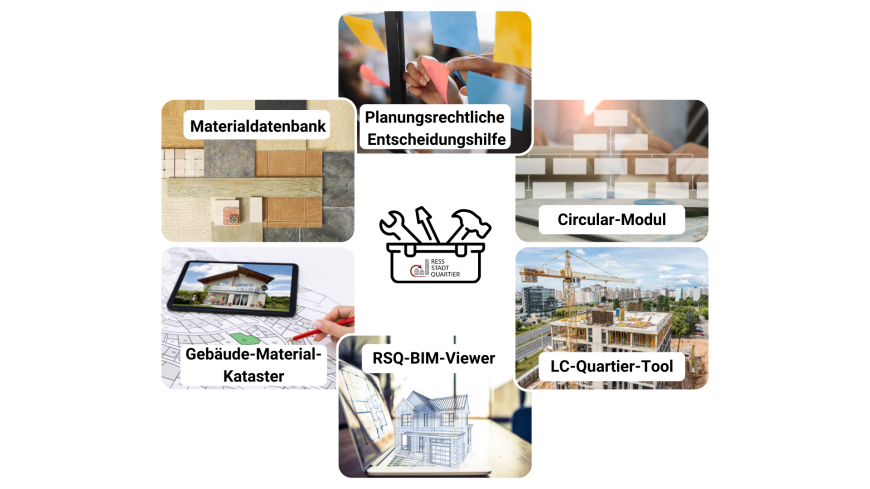RessStadtQuartier1+2 – project completion and closing events of the RES:Z funding initiative
2024/11/04

The RessStadtQuartier2 project from the “Resource-efficient urban neighbourhoods for the future – RES:Z” funding initiative was successfully completed in August 2024. Together with the first project RessStadtQuartier1, the two projects have made significant progress in the field of resource-efficient urban development and neighbourhood-based material flow management over the past five years.
A “Resource efficiency toolbox” was developed in RessStadtQuartier1 (2019 – 2022, FKZ: 033W109A) to assess and increase resource efficiency within neighbourhood-based material flow management. This toolbox contains knowledge and information bases as well as practical instruments that can be used to implement suitable measures to increase resource efficiency in all phases of neighbourhood development. The innovation potential and the degree of novelty of the developed “Resource Efficiency Toolbox” lies in particular in the linking of Life Cycle Assessment (LCA) approaches, Building Information Modelling (BIM) and GIS-based cadastres. This is done conceptually by linking the “physical life cycle” with the “planning cycle” of neighbourhoods. RessStadtQuartier2 (2022 – 2024, FKZ: 033W109AN) established the “Resource Efficiency Toolbox” in practice, in which six tools were tested in real planning processes and further developed according to application requirements.
The project team would like to thank all associated partners for their active support and cooperation within RessStadtQuartier1+2: thanks go to the participating city of Darmstadt as well as to the associated partner cities of Wiesbaden and Bensheim and the municipalities of Münster (Hesse) and Otzberg as well as to Bauverein AG, SEG Stadtentwicklungsgesellschaft Wiesbaden mbH, Leibniz Universität Hannover and zigmo engineering.
Two final events were held in September as part of the “Resource-efficient urban neighbourhoods for the future – RES:Z” funding initiative. The solutions developed by the projects and the DIN SPEC 91468 “Guidelines for resource-efficient urban neighbourhoods” were presented here. There was also the opportunity to discuss perspectives on how the use of resource-saving technologies and materials can be realised in urban areas together with participants from nationwide networks. Further information on the final events can be found here.
